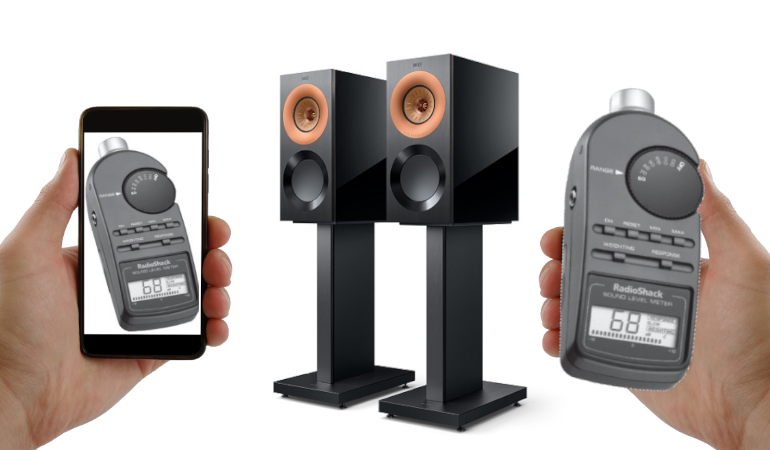Using an SPL App in your Home Theater
Learning about home theater is a great thing. It helps you better set up your speakers, add acoustic panels to your room, and run your room correction program. But it can also sometimes cause problems. One problem we often see is when people start to want to check their speaker levels manually. They download an SPL app for their phone, take a few measurements of their home theater, and compare them to what the room correction calibration has done. They are surprised when their measurements don’t line up. Why might that be? Let’s explore.
Accuracy Is Important
We’ve talked about the trim and distance levels on your AV receiver. We’ve found that most modern AV receivers do a fine job of setting these levels. But, back in the day, we had to do it manually. This required an SPL meter and a little bit of time. We even have a guide on how to do it. But SPL meters have been harder to find and apps have overtaken them. Why buy a device that you might use a couple of times for $20-$30 (or more) when you can just download an app?
Obviously, because of accuracy. The standalone SPL meter has a microphone that is built-in. That microphone is probably not the most accurate, but those inaccuracies can be corrected by the meter. This means you can expect reasonably accurate sound pressure readings.
That isn’t true with the SPL apps. They don’t necessarily know what phone you are using and the accuracy of the microphone. As most will state in their descriptions, the microphones in your phone are usually tuned to the frequencies associated with the human voice. Again, these inaccuracies can be adjusted if the app knows which phone you are using.
We have yet to find one that asks for that information.
Time Weighting And Frequency Weighting
Weighting is a fancy way of saying that you are applying a filter. When using a standalone SPL meter, we suggest that you set the meter to C Weighting and Slow Time Weighting. The Slow setting gives you a more accurate reading of the average volume. If you set it to Fast, the needle will jump around so much that it will be hard to read. The Slow setting smooths that out. C Weighting is important because it captures the entire frequency range.
If you are using an SPL app to measure your home theater speakers, you may not have access to these settings. Many don’t and they don’t tell you what settings are their default. If it is A Weighting (as it often is), you can be sure that your subwoofer will show a result that is too quiet. A-Weighting is designed to capture what we actually hear (it is tuned to the human ear) and is less sensitive to bass frequencies (just like our ears).
What Should You Look for in an SPL App?
Obviously, you should look for the ability to control the Time and Weighting settings. If you can’t put the SPL app into C-Weighting and Slow response time, it won’t be much use for measuring your home theater. Some will allow you to calibrate the app. But, of course, you’d need some way to know how loud the sound is that you are playing. If you could do that, you wouldn’t need the app! If you can find one that makes adjustments in their measurements based on the phone or device you are using, that would be great. Let us know in the comments if you do. We want to download it.
How Should You Use an SPL App in Your Home Theater?
If you are looking for truly accurate readings of the SPL of your home theater speakers, an SPL app is not the way to go. They just aren’t accurate enough. When calibrating your home theater speakers, you are trying to ensure that every speaker reaches the center of your couch at the same volume. The SPL apps can give you an idea of how loud they are, but they can’t dial them in enough to say that they are at the exact same volume. The SPL app should be thought of as a general reading. If it is close to what you expect, then assume that your AV receiver got it right. If it is way off, check those Time and Frequency weighting settings. Because your AV receiver probably got is right and it is the app that is wrong.
These SPL apps were never really meant for home theater calibration. They were really meant to let you know when you need to put in earplugs. For that, you don’t need to know exactly how loud something is, just that it is too loud.
If you want more accurate readings, buying an SPL meter is really the only way to go. If you just want a general sense of how loud something is, the SPL apps are fine.


